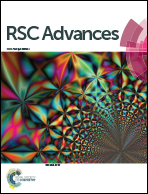The bi-functional roles of Ca-Y zeolite in the treatment of ethanol–HCl induced gastric ulcer using a mice model†
Abstract
A calcium(II) exchanged zeolite Y (Ca-Y) was prepared and evaluated in ethanol–HCl induced gastric ulcer using a mice model. Benefiting from the high procoagulant activity, good resistance to gastric fluid and anti-acid capability of Ca-Y, a significantly reduced ulcer area percentage from 35.1% ± 4.4% to 11.5% ± 1.9%, was achieved at an oral dosage of 5.0 g kg−1, along with an increased intragastric pH from 2.0 ± 0.5 to 4.5 ± 0.5.


 Please wait while we load your content...
Please wait while we load your content...